Williams Touring Car Engineering was founded on 8th September 1994 after Renault UK and Williams Grand Prix Engineering struck a deal for the team to prepare and race the firm’s Renault Laguna model in the British Touring Car Championship from 1995 onwards, taking over from Renault Dealer Racing who had originally run the Renault programme.
The operation was overseen by WTCE directors Sir Frank Williams & Sir Patrick Head, but the day to day operations were overseen by Ian Harrison, who used to be Williams Grand Prix Engineering team manager. The technical side was headed up by John Russell, who oversaw Damon Hill’s Willams F1 car in 1994.
“It was obvious over the past few seasons, that the series was getting more competitive, more popular & more closely followed by viewers on television. So I said to Patrick that it would do Williams a lot of good to be involved in the championship, due to the size and the international nature of Super Touring cars. Of course, we are always looking to increase our links with Renault too.”
Whilst being formed in the September of 1994, the company only became operational in November 1994, meaning there was very little time for the designers and mechanics settle in to their new team and go about designing and building BTCC Supertouring Renault Lagunas for the 1995 season, which began on April 2nd in 1995.

The drivers were signed up and ready to go for 1995. The team transferred Alain Menu over from Renault Dealer Racing & partnered him will 1991 champion Will Hoy, which meant WTCE had one of the strongest driver pairings on the BTCC grid.
That didn’t stop rumours that Alain Prost was going to take over one of the Lagunas. The four time Formula 1 World Champion wasn’t interested in another Formula 1 drive, but he still wanted to race competitively. “My dilemma is there,” Prost said. “I don’t want to drive in Formula One any more, but I still want to drive. It’s complex and ambiguous, but I’m still looking for myself… I’m busy, but I’m just lacking something a little more exciting and I need a challenge.”
The rumours never materialised and Menu and Hoy started the 1995 season for the team.
However, all was not plain sailing, the media day car was just a hybrid of the one remaining car from 1994 – the new 1995 spec Renault Laguna would not be ready until the Friday before the opening race of the season at Donington Park.

“The people “up the road” as I call them, at Touring Cars, have done an incredible job, working 6 or 7 days a week since November – and there is a lot still to do.
We aren’t where we want to be yet & maybe we are talking slow beginnings, but ever improving performance.”
“I had my first run in the new Laguna at Silverstone the day before I had to qualify it at Donington Park. Prior to this I had to share the sole remaining 1994 car with my new team-mate, Will Hoy. At each test session there would be a different set of mechanics present as they had to learn about the car just as much as the drivers. In fact, until the Donington Park race, Will and I had played a small role in the creation of the team.”
The frantic pre-season was over and Williams were about to have their first taste of BTCC action.

At Donington, the Vauxhalls and the Volvos would have it their way, unsurprisingly as they had compelted the biggest testing schedules. In contrast, Renault’s first laps in anger were in qualifying!
“The first time I truly drove the new Laguna in anger was during Saturday’s qualifying sessions at Donington – even then I left a little bit of a safety margin. The boys were knackered from all the hard work, so it was important that Will and I brought both cars home safely and in the points. 2nd in the first race gave us all a big boost and proved that all the work was not for nothing. To be third in the championship after the first meeting was as good as I dared hope.”
It didn’t take long. In the third meeting of the season at Thruxton, Alain Menu took pole, the win and the fastest lap. 5 races into their debut in the championship and WTCE were already winners. It boded well for the future.

By mid season, Alain Menu was rarely off the podium, however, this coincided with Vauxhall’s strong mid season run, where John Cleland took four victories in a row, giving him a commanding lead in the standings. Development of the Laguna continued and towards the end of the season, thanks in part to a new engine build from Sodemo, Renault ended up with the strongest package, winning all 5 of the last races, but it was too late as Cleland had already clinched the championship.
During the mid season, those Alain Prost rumours had re-surfaced, with talks of him driving a third Laguna to make a few guest appearances. “Nothing is set in concrete – Alain is employed by Renault and I know he’d love to drive a touring car! There might be the odd straw in the wind,” said team owner Sir Frank Williams. Sadly, Prost never took part in the BTCC.
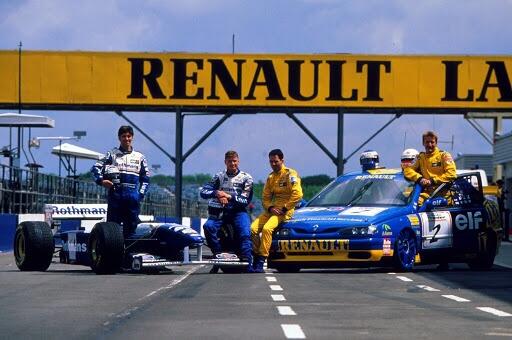
With Menu winning 3 of the last 5 races and Will Hoy winning the other 2, it did mean that Renault had snatched the manufacturer’s championship away from Vauxhall at the very last meeting, winning the title by 5 championship points. Williams had won a title in their first season & with the strong form at the end of the season, things were looking good for 1996.

However, after seeing the successes of BMW and Alfa Romeo in the BTCC, Audi entered a manufacturer effort into the championship for the first time, racing its all conquering Audi A4 Quattro, with its unique 4WD system. Things were about to get a lot tougher for Williams in 1996.
Audi, led by multiple touring car champion, Frank Biela, dominated from the off. 4 wins in the first 5 races gave him a commanding lead in the championship, which he would never relinquish. Williams, meanwhile, had a fast car, but suffered from reliability woes at the start of the season. It take upto the half way point before Menu took his first win of the season, taking 2 wins at Brands Hatch. Team mate Will Hoy endured a tough season – despite starting strongly, finishing 2nd to Biela in the opening two rounds. He would visit the podium just once more that season on his way to 9th overall in the championship.
The Quattro/4WD arguement would last all season long. There was a clear advantage, the Audi A4 won seven Touring Car titles throughout the world in 1996 alone, but was it a fair palying field?
Tim Newton, who was technical operations manager at WTCE, told Motorsport.com “I think two-wheel drive and four-wheel drive should always be in different classes. No equivalency formula really works. It was the right decision to ban 4WD from 1998, but I don’t think it should ever have come in (in 1996). The front suspension strut they ran on the A4 was also a fairly broad interpretation of the rules, because it wasn’t the same as the road car version. I think there was a bit too much of a big company with lots of money having things go through.”
It wasn’t just Williams that were miffed by the front suspension of the Audi. Vauxhall had also protested the validity of the suspension, but it was declared fully legal by the FIA, who governed the rules of the Super Touring formula.
During the off season, Will Hoy moved away from the team and signed for the Ford team, whilst his place in the Williams team was still up for grabs. Williams wanted someone with status and a reputation and were interested in both Gianni Morbidelli and Jean-Cristophe Boullion, both with Formula 1 drives under their belt. Also in the running was the relatively unknown Jason Plato, who had just won the 1996 Renault Spider Cup.
Despite being hopeful in securing the drive, Jason was told early on that he didn’t have the profile for the drive. Plato mulled over the decision for a few days, before he woke up full of anger one morning and decided to travel to the Williams HQ at 5am. He then proceeded to sit in the car park and smoke his way through a packet of cigarettes before door-stepping the boss at Williams HQ in Didcot.
“I basically sat in the car park, smoking myself to oblivion, eating mints and speaking to my Dad for the best part of three and a bit hours! Frank’s car then came in and off I went after him, with my briefcase, which was empty! I tried to break into a cool walk as his car parked up – it was awkward to say the least!
I was at the car door, staring at Frank, also forgetting that he needs assistance to be taken out of the car and I had this horrible, gut-wrenching awkwardness thinking ‘what the hell am I doing?!’
I begged and pleaded with him to give me five minutes of his time, which he agreed to…. after a bit of negotiation.
It was probably one of the proudest moments of my life, actually. Had I not done what I did that day, I wouldn’t have had a touring car career.”
After much wrangling, Plato secured an agreement to test with Frank Williams and the team owner organised a test between the 3 drivers on the shortlist. Gianni Morbidelli, Jean-Cristophe Boullion and Jason Plato, with the idea being that the fastest would get the seat for 1997.
Jason won the shoot out and was promptly put alongside Alain Menu in the Renault Laguna for 1997. Whilst all that was going on, whispers were rife that Williams had got it right and that the Laguna was going to be the car to beat in 1997, especially as the controversial 4WD Audi A4 Quattro had been given an additional 30kgs weight penalty, in an attempt to equalise the performances of FWD and 4WD. BMW had pulled out of the series as a manufacturer at the end of 1996, so the only RWD car on track was the independent Colin Gallie, who was running an ex-works 3 series.
“I remember Alain getting out of the car at a pre-season test and saying that this car was amazing – a real championship killer. So now I am in this amazing place – I’m in the best team, have got the best car… alright, I have the world’s best touring car driver as my team mate, but what a fantasic yard stick to have.”
Managerial changes occured too. Ian Harrison, who had become a director of WTCE at the end of the 1995 season, had been tempted away to form the newly formed Triple Eight Race Engineering squad, who were contracted to run the Vauxhall programme for 1997.
The first race of the season was at Donington Park, where Renault’s strength for 1997 was confirmed. However, there was to be a surprise, as BTCC newcomer Jason Plato took pole position and not Alain Menu. In fact, Jason was to take pole position in the first three races of the season – proving that he was the right choice for the vacant drive during the off season.
Despite Jason’s dominance in qualifying at the start of the season, his team mate’s experience showed during the races as Alain won them all. In fact, he won the first five races of the season to take a commanding lead in the standings, which he would never relinquish. He would go on to win a record 12 races during the season. With Jason winning another 2 meaning that Williams and Renault took more wins than the rest of the field put together!
Menu wrapped the title up by Snetteron, with another Renault 1-2, but this time with Jason Plato taking his first ever BTCC victory. Menu eventually won the series by 110 points. Jason was hoping to finish as runner-up and was on course to do so at the last meeting at Silverstone – until a controversial incident with his team mate. This meant Audi’s Frank Biela snatched 2nd place and denied Williams of the clean sweep.
Certainly in 1997, he (Alain Menu) was the finest driver in the world, in touring cars. His performances were just epic. I know how hard I was pushing & I know how detailed our analysis was, how finite we went into our performance….. and he was just quicker – and it was only a little bit everywhere.”
Still, a creditable 3rd position in the standings for Plato’s debut season was no mean feat & Williams looked to strengthen their grip on top for the upcoming 1998 season.
1998 soon came along and with it, a big shake up in the championship regulations. There were now 2 different types of race – a short “sprint” race & a longer “feature” race, which included a mandatory pit stop. Some suggested that teams such as Williams (Renault), TWR (Volvo) & Prodrive (Honda) would benefit from their current F1 programmes in respect of tactics and also pitstops. Qualifying would also be different, with the Sprint race grid line up chosen via a “One Shot Showdown” where drivers only had one flying lap to set their qualifying time.

The biggest change at Williams was in fact the livery. The familiar Renault yellow and blue livery was replaced by the dark green colour of new title sponsor, Nescafe Blend 37. With Audi’s controversial 4WD system banned for 1998 and their lead driver, Frank Biela, departing – defending champions Alain Menu and Renault were both seen as championship favourites at the start of the season.
1998 would prove to be a surprisingly tough year for the team, despite a fairly strong start. Alain Menu won the opening feature race of the season, whilst after 2 rounds, Jason Plato led the standings. A win a-piece for Jason and Alain at Oulton Park in May proved to be the high point of the season, as by the second half of the season, the competiton had caught up and overtaken the Renaults, with Nissan and Volvo now leading the way.
As the season wore on, the team would see one more victory for Menu at Thruxton, before he and Jason finished 4th and 5th in the championship respectively. In terms of silverware, the most successful Laguna racer that season was Norweigan Tommy Rustad, who raced a 1997 Williams Renault Laguna in the Autosport Cup for Independents. He won the championship for his class & as a reward, Renault ran him in a third factory Laguna for the finale at Silverstone.
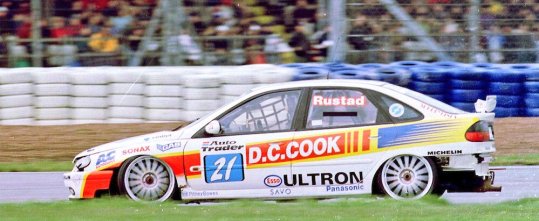
By now, it was well known that Menu had been tempted away from the team by Ford, who were putting a lot of effort and resources into a new Mondeo programme with Prodrive for 1999, which had been announced between the 10th and 11th meeting of the season. As the season drew to a close, results tailed off for Alain, who threw and infamous ‘wobbly’ and allegedly retired a perfectly healthy car at the season finale at Silverstone. That’s after having booted Cleland off the track, going off track himself at numerous points and having a go at Tommy Rustad in the guest 3rd Laguna for having the audacity to overtake him at Copse.

1999 would be the first season the team would be without its lead driver, Alain Menu. Jason Plato was promoted to team leader, whilst the team appointed Jean-Cristophe Boullion, who lost out to Jason Plato in 1997, to race the second Laguna. JCB, as he was affectionately known, was known to Williams after several years as the test driver for the Grand Prix team. Boullion was officially unveiled at Autosport International.
Prior to the season starting, Menu had been sticking the knife in with the press. He told Autosport, “I’ve got to say, they’re leaving it a bit late! If they’ve got any problems they won’t have much time to fix them. They’re playing with fire a little bit.”
Jason Plato bit back, saying that Renault were happy with the car being later than the rest of the grid. “It’s late – because we want to make it right.”
The season opener was at Donington Park on Easter Monday and whilst all the headlines were taken by independent driver Matt Neal taking his first ever outright victory in the BTCC, Plato had quietly gone about his business and finished both races on the podium. Meanwhile, JCB was running strongly on his BTCC debut, before he was given a typical welcome to touring cars and ended up in the gravel at the Old Hairpin after contact with Matt Neal.
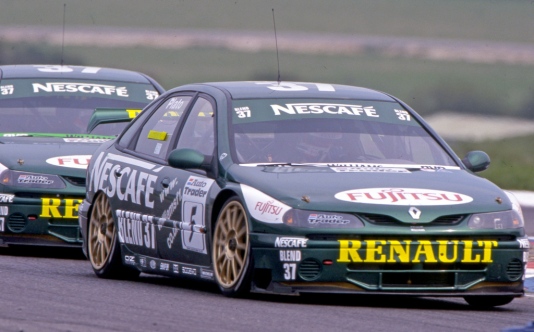
Things would get better still at the next meeting, as Plato would win his first race of the 1999 season, winning the wet/dry feature race at Silverstone. In the same race, Boullion would also bag his first BTCC podium by finishing 3rd.
1999 would also see a third Laguna on the grid, as Arena Motorsport picked up a pair of 1998 WTCE Lagunas to run in the BTCC, although they only ever ran one car – firstly in the hands of Russell Spence, then from Snetteron onwards, WTCE veteran Will Hoy drove the car. In Hoy’s hands, the car won 2 independent victories.

As for Williams, the Silverstone meeting would be the high point of the year, with Plato only taking that single victory and Boullion would never trouble the podium finishers again. In fact, a run of three engine failures in a row, in the first races with the 1999 engine, meant Plato was always playing catch up in the championship. The pace of the Nissan Primera’s of Leslie and Aiello was just too strong for the rest of the field, leaving everyone else to battle for third in the standings. A strong end of the season for Volvo saw 1998 champion Rydell snatch third in the final meeting.
That final meeting was the last ever appearance of Williams Touring Car Engineering in the BTCC & it is doubtful that a Williams team will ever grace the paddocks of the BTCC ever again. Earlier in the year, Renault had confirmed that they were withdrawing from the BTCC from the end of the 1999 season & with no new manufacturer to partner with, WTCE would also be withdrawing.
The iconic “RENAULT” branding that we had become so used to seeing on the front of the Lagunas had been replaced with “AU REVOIR”. Hopes were high, as their only win of the season had also come at Silverstone, but it wasn’t to be. Plato had inherited pole for race 1, after the Nissans were sent to the back of the grid, but the joy was short lived – as the warm up lap began, Jason couldn’t get the engine going & was left stranded on the grid. Engine problems biting him again, a regular occurance throughout 1999. \That race was soon red flagged, due to the amount of rain making conditions unsafe for racing – Boullion finishing in 8th position.
Conditions improved slightly for the second race to get underway, with JCB high on the grid in third. Sadly, this wasn’t to be a fairytale ending, as a collison with Honda’s Peter Kox meant both men were out of the race on the very first lap. Plato fared better and rose to third before the compulsory pit stops. Sadly, after speeding in the pit lane during his first stop, Plato had to stop again, which ruined his race. Worse was to follow though – as when former WTCE driver Alain Menu went off track, he returned to the track straight into the path of Plato and harpooned the Renault, damaging the Laguna heavily. Initially Jason tried to carry on, but it was too much damage and the car slowly crawled to a halt at the end of the pit lane. The mechanics slowly pushed the battered Laguna into its garage & that was the last we saw of a WTCE car in the BTCC. A cruel twist of fate that it would be WTCE’s most successful driver (Menu) that would hammer the final nail into the coffin.
In fact, the highest scoring Renault Laguna would be that of Will Hoy, finishing a commendable 6th and 7th in the two races.
Then that was that. The final act for Williams Touring Car Engineering in the BTCC. 33 wins, 2 manufacturer championships in 1995 and 1997 and one drivers championship in 1997 for Alain Menu. Not a bad return for 5 seasons of racing.
The last operation for the team was at Pembrey, Wales – late on in 1999. They were there to give Andy Priaulx his prize test drive in a WTCE Renault Laguna for winning the Renault Spider Cup championship.
A handful of the cars are now on display in the Williams museum, but a large number of Super Touring Lagunas can now be found at Renault’s Heritage Collection, in storage at Flins sur Seine. A handful of the Laguna’s are also owned by Wiebe Motorsport and compete in historic Super Touring events. Mark Jones and Simon Garrad also own a WTCE Laguna and compete in the Historic SuperTouring Championship in the UK.

One Laguna chassis was donated by Renault to the British Automobile Racing Club to be used for marshal training – the chassis having been stripped of running gear and fitted with castors to allow it to be easily moved. This was based in the Scrutineering bay at Thruxton race circuit for many years, until it was scrapped at the end of 2014.
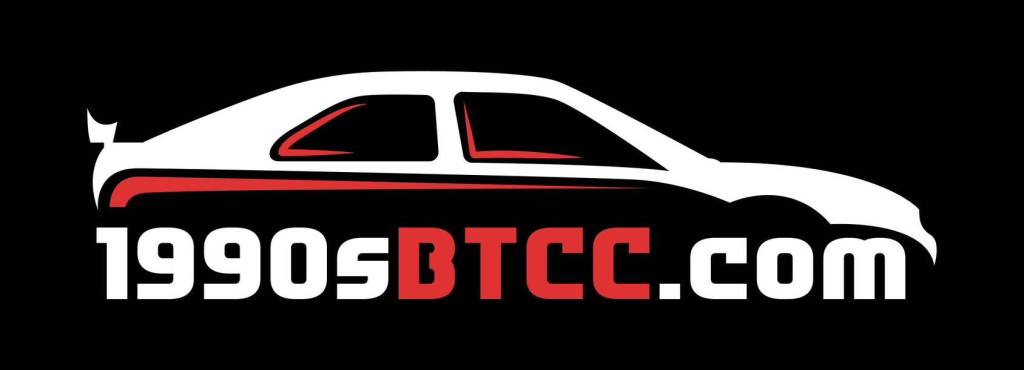

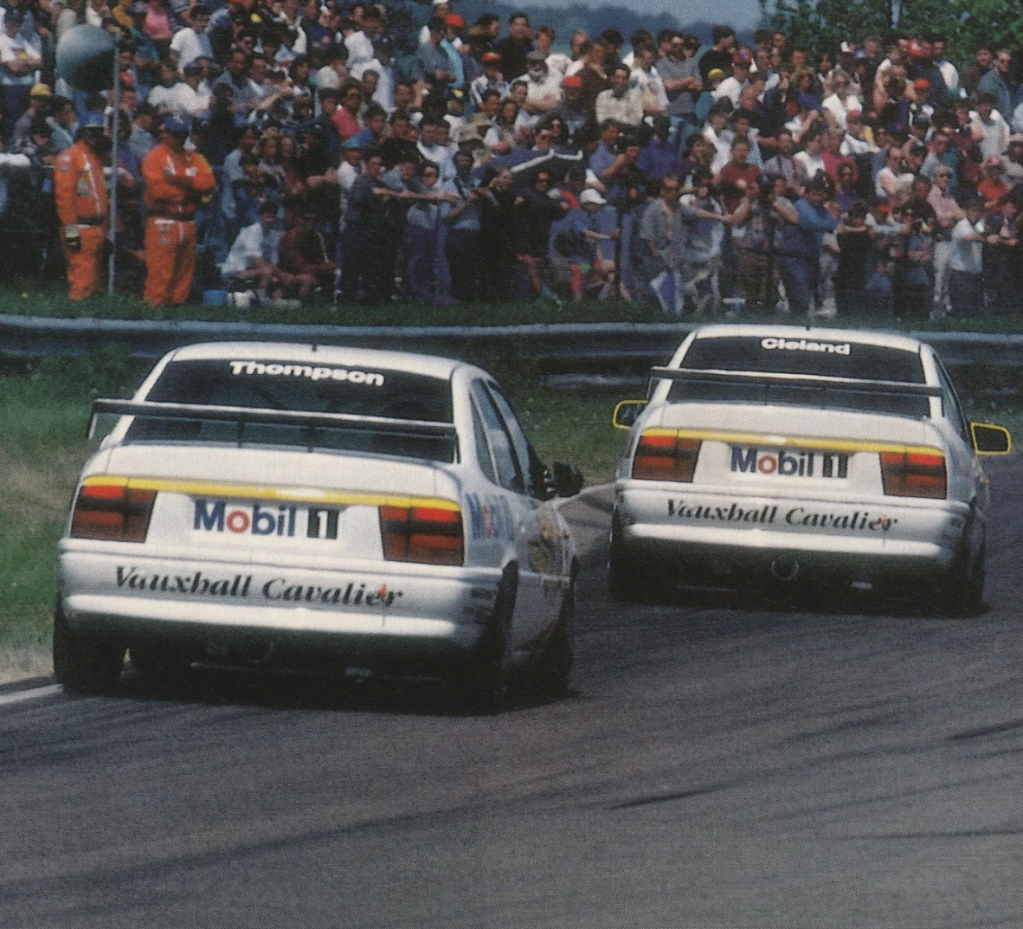
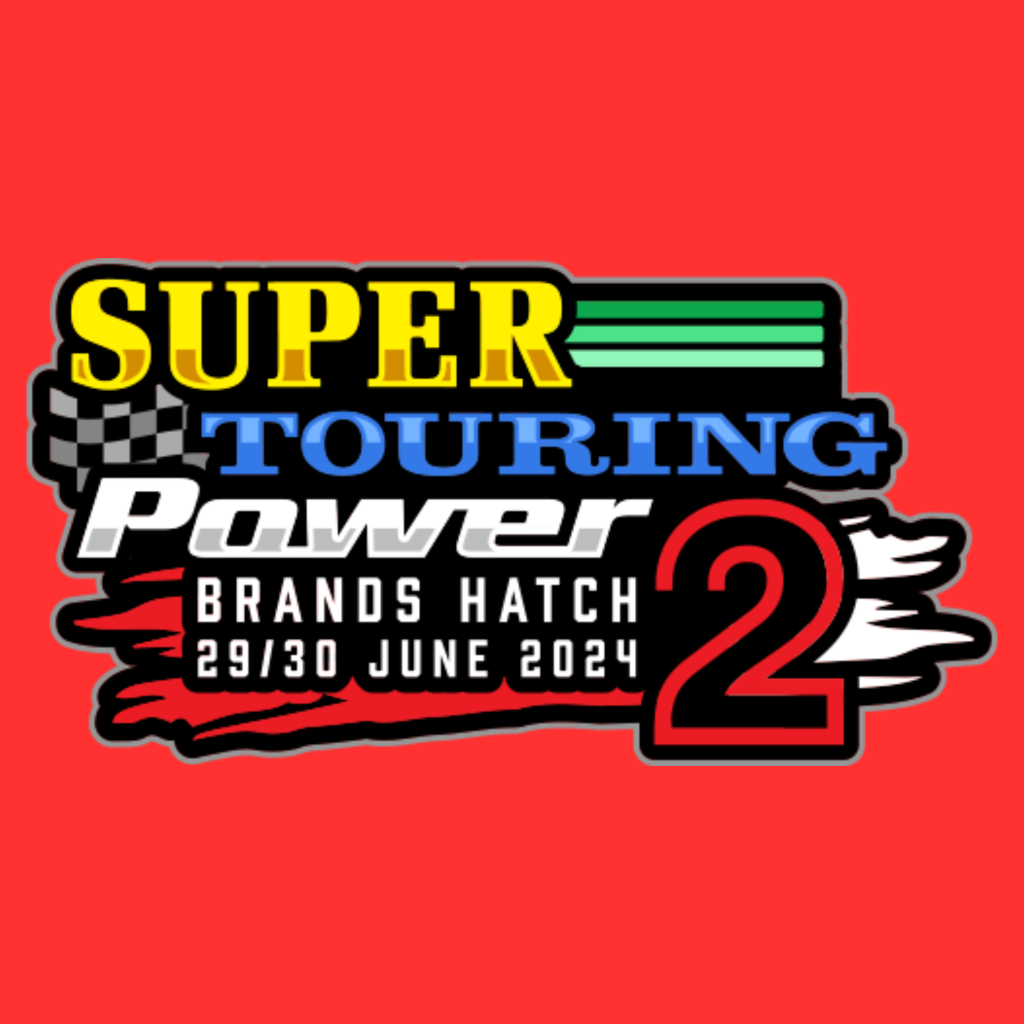
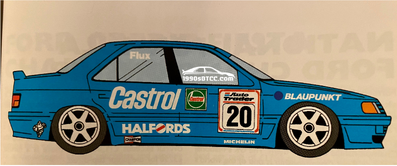
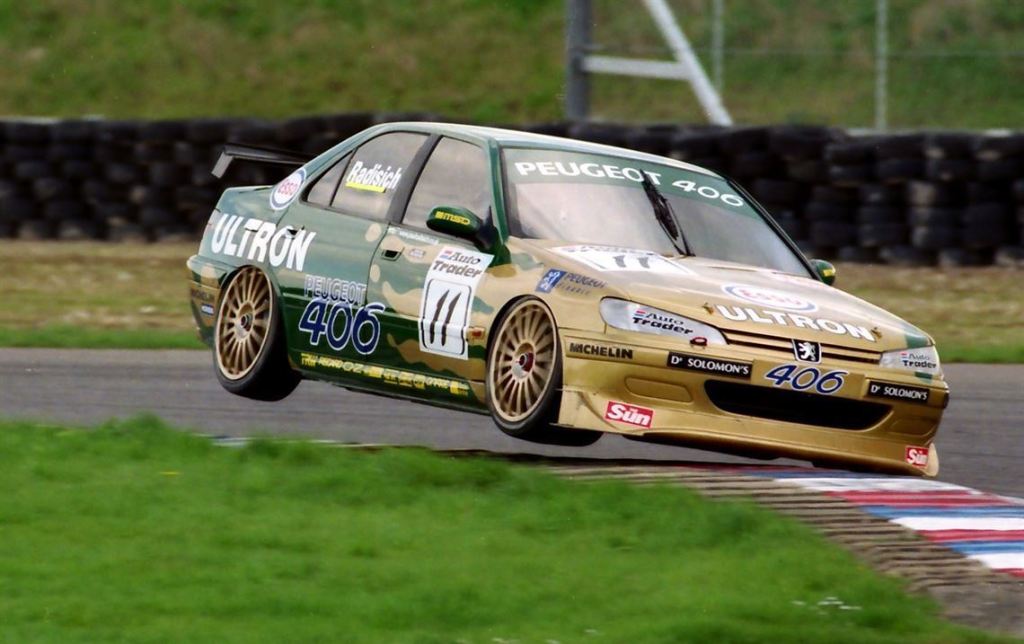
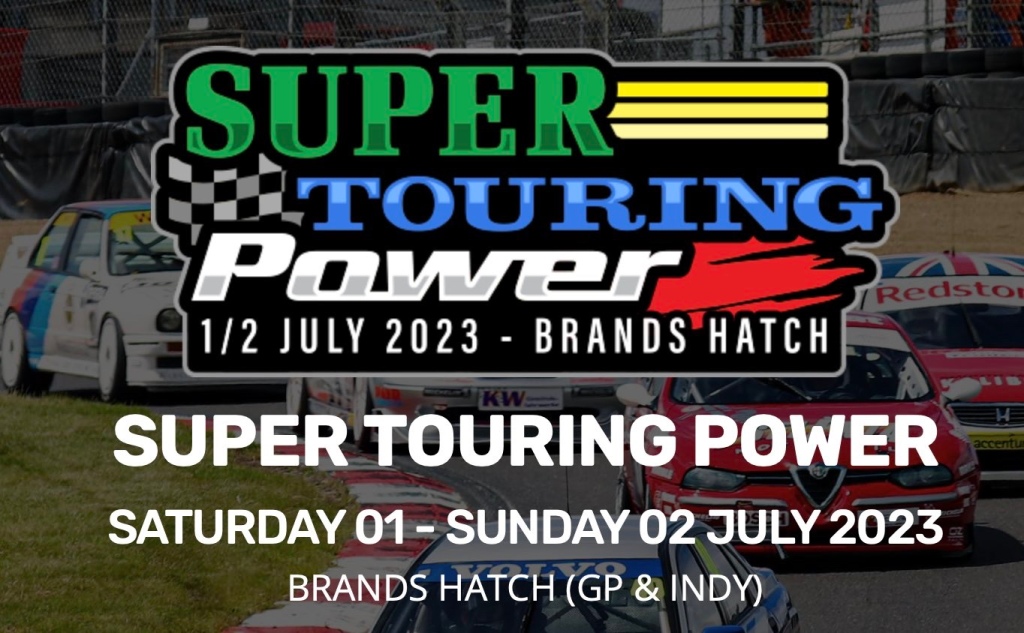
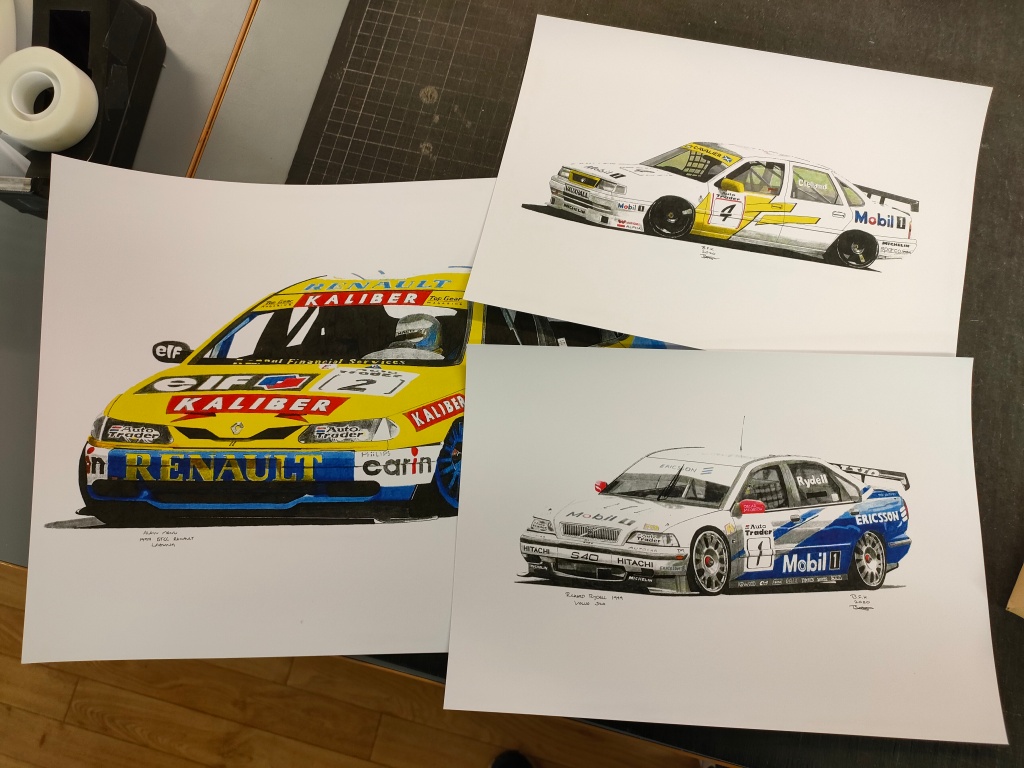
Leave a comment